Dahuichang Tiefa
JiTong
Yuanbaoshan
Chengde
Part 2: Sujiatun Steam Locomotive Workshop
 |
| Not only do the locomotive parts look American, but so do
the B Ball backboards in the parking lot behind Sujiatun Steam
Locomotive Workshop near the industrial city of Shenyang, which is
near the border with North Korea. |
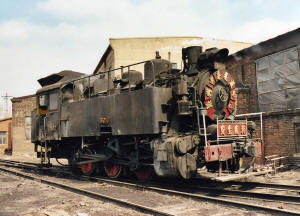 |
| This is a traditional American style steam backshop, still
doing several overhauls per month of locomotives used by regional
and industrial railroads. While these engines are good for another
few years of heavy service, this facility is expected to close soon.
Recently the last China Rail steam backshop closed, but it's
equipment has been sold for reuse in another location. Maybe 2005
will be the last time this is done. |
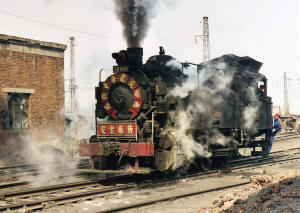 |
| Sujiatun uses two of these Chinese built GJ class 0-6-0
tankers as shop dinkeys. This one is decorated with communist party
slogans, and there seemed to be a fair percentage of employees there
who didn't act particularly happy to see two Americans on holiday.
Of course you can't win 'em all, and some of the guys were certainly
friendly enough. |
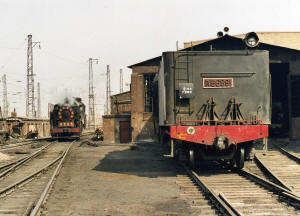 |
| It only takes a couple of weeks to do tires, rings, brasses
and bearings, flues, superheaters, staybolts, appliances, tender,
brakes, gauges and paint. Shown here is one of the last QJ class
2-10-2s of the famous JiTong Tielu to receive an overhaul, and this
engine will most probably be held in reserve or sold after the
completion of dieselization expected for later this year. |
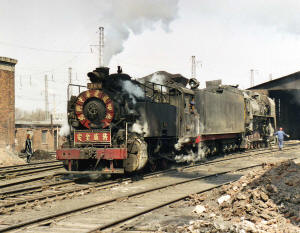 |
| The inside of the shop was too dark for me to get good
pictures, but I can tell you that half a dozen guys started pulling superheater elements out of this engine at the start of day shift,
and were ready for a re-spot by mid morning tea time !!! There must
be ten gangs of the various shop crafts going from one engine to the
next, with two SY class 2-8-2s and two QJs being rebuilt at once,
and several operations being done simultaneously on each locomotive.
In the same time that it took the boilermakers to do their job, I
saw a single welder reweld all the staybolts on an entire side sheet
of another QJ, and while he was doing that, another guy bored out
the valve cage on one side, stuffed the piston valve and rings back
in, and torqued the heads and gaskets back on. Of course, they do it
every day and have all the right tools and jigs handy. |
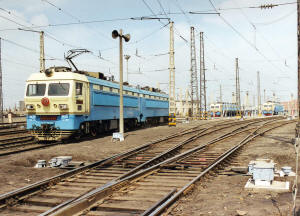 |
| One doesn't have far to go to see how those rumors about
the end of steam got started. Next to Sujiatun Workshop is a typical
China Rail main line engine shop. Suffice it to say that China has
an enormous, mostly modern, mostly standardized rail system, which
is an excellent way to travel. As a former BN
employee, I have to say that I'm duly impressed with the size and
ferocity of these squawk boxes. They certainly do a great job of
broadcasting the yardmaster's instructions, but you'd have to stand
kind of tall to try and talk into one of those things.... |
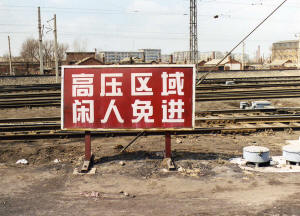 |
| This is the reason I went with a guide, a complete
departure from my usual practice of roughing it.
While I can manage in Spanish or German, I am totally clueless in
trying to read something like this sign or the following schedule
for the Tiefa Coal Group Railroad. (You've got to remember that I
was no good in ENGLISH to begin with. I can't spell, hated
diagramming sentences, got bored with the reading assignments, and
wrote scary and disturbing essays.) Unless you are very brilliant,
or can travel with a native, I can't recommend strongly enough the
services of a bona fide Chinese government tour guide. Considering
the cost of gas, motels, meals, tourist traps, etc... you can be
carried around in royal style to the Chinese steam locations and points of interest
of your choosing for less money per person than even
a cheesy vacation in the good old USA. If you are lucky, you may be
able to make arrangements with the noted steam locomotive
photographer, Mr. XueJun Liu, to provide all inclusive arrangements
for you. He can be contacted by email at:
friendctsjun@hotmail.com. |
Dahuichang Tiefa
JiTong
Yuanbaoshan
Chengde
return to articles index |